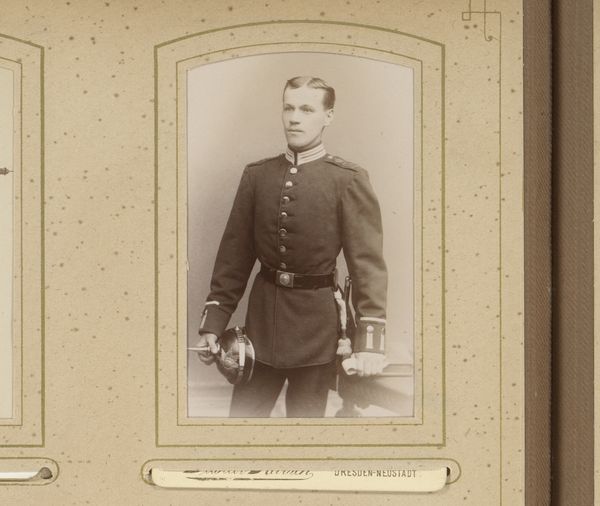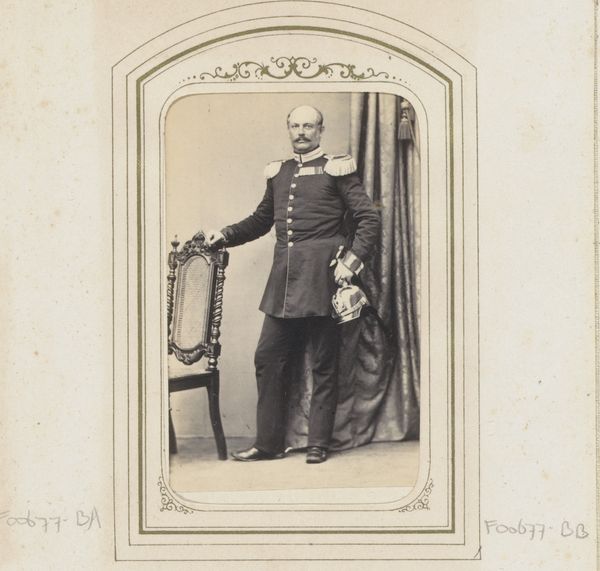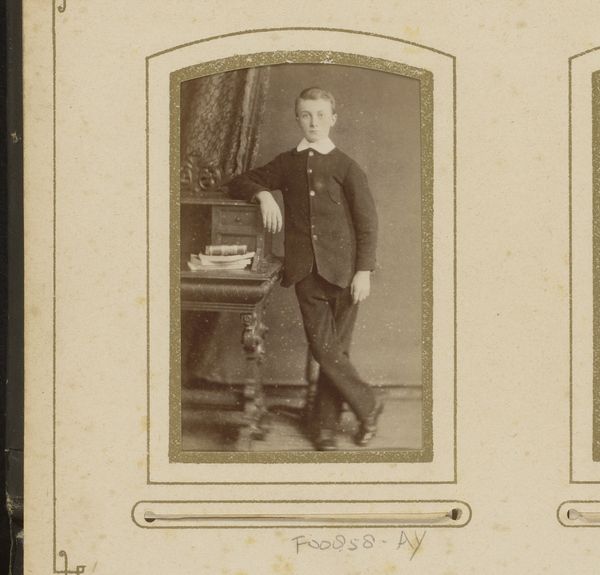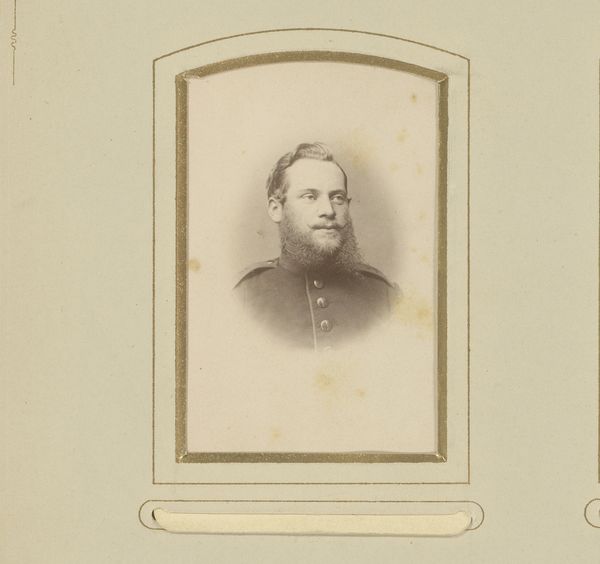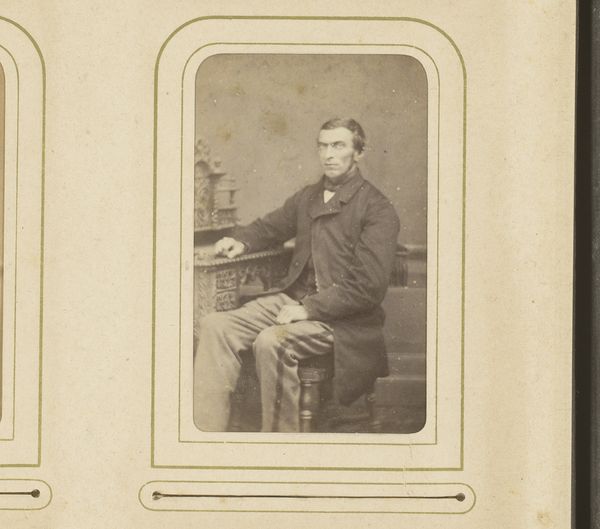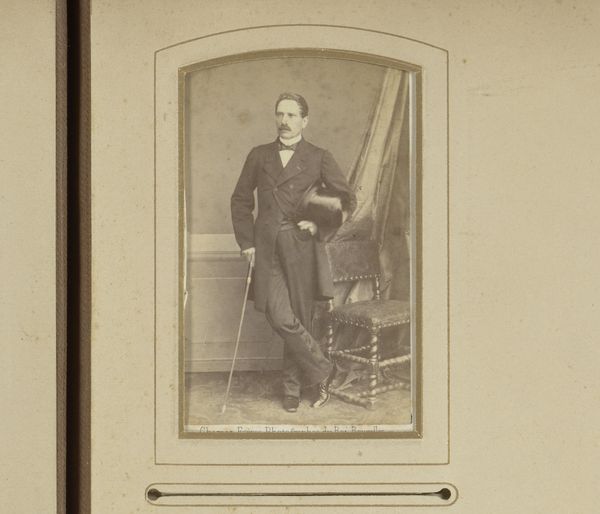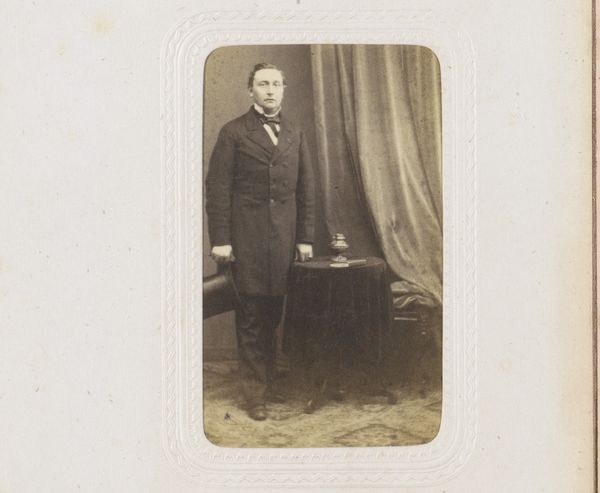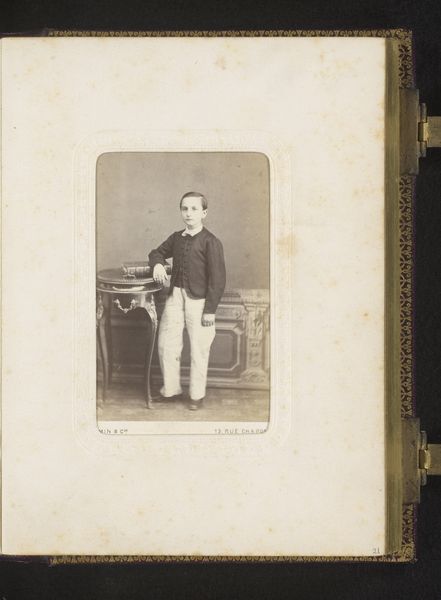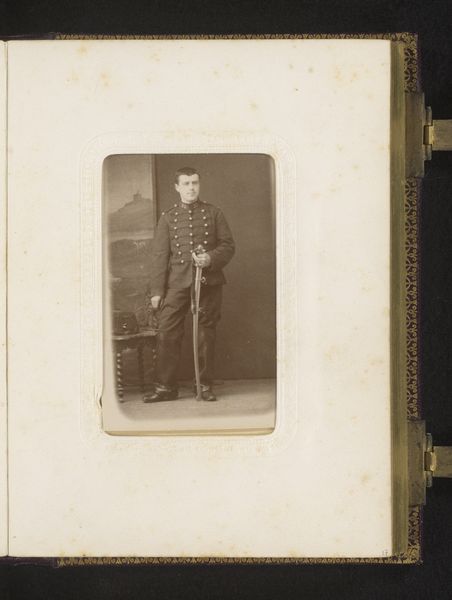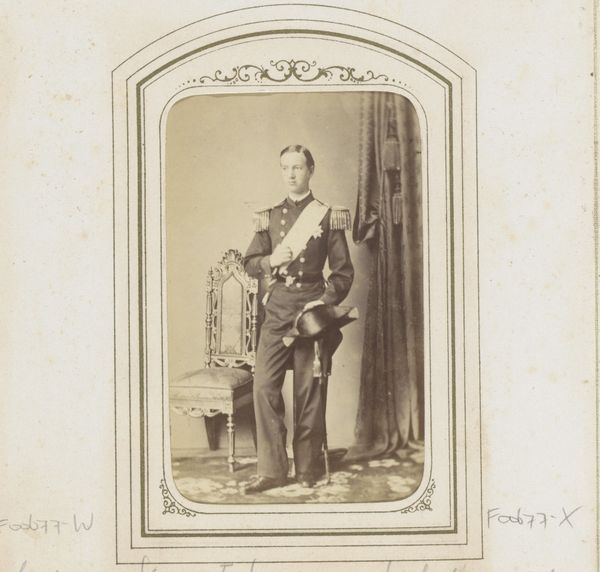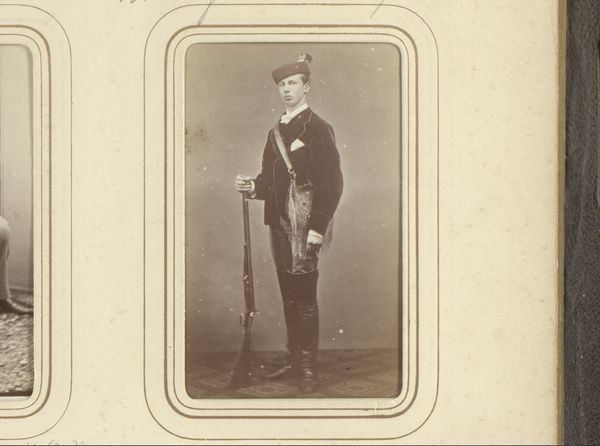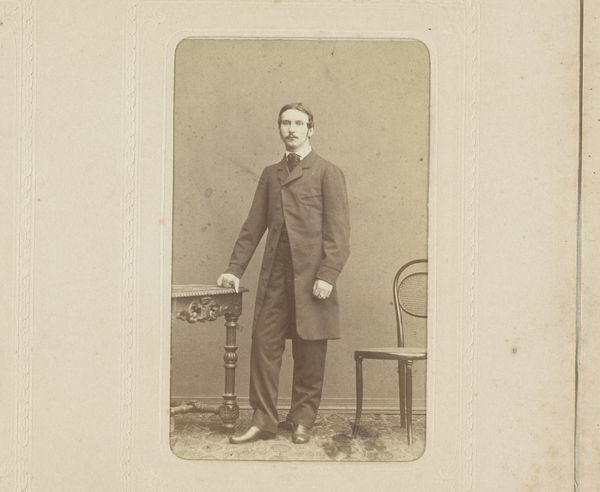
Portret van een jonge man in uniform met pet in de hand, leunend op een schrijftafel 1850 - 1900
0:00
0:00
Dimensions: height 81 mm, width 52 mm
Copyright: Rijks Museum: Open Domain
Curator: Here we have a photograph from somewhere between 1850 and 1900, showing a young man in uniform. The piece is entitled "Portret van een jonge man in uniform met pet in de hand, leunend op een schrijftafel." The artist has signed it as Leopold Wallnau. Editor: The instant impression is one of quiet dignity. There's something touchingly vulnerable in his eyes despite the formal attire, wouldn't you say? And that baroque writing desk and chair only highlight his youth; as if he’s merely posing at adulthood. Curator: I agree. The staging, in many ways, enhances the symbols that echo youth. His uniform—while suggesting responsibility—is rather immaculate. You have to imagine it suggests a rank without much action. It almost whispers the romantic notion of military service so common to this period. The artist is making great use of academic-art conventions for this type of portrait, for instance, romanticizing. Editor: It's intriguing to me how photography at that time borrowed from the language of painting, especially portraiture. See the soft focus? Wallnau certainly knew how to suggest depth and gravity through visual cues; a powerful stance suggesting authority but there is something slightly unnerving. Curator: Maybe that slightly vacant expression? It could be the sitter had to hold his pose for so long! But, looking closer, one sees the meticulously captured detail in the braiding of his uniform or the intricate carving on the writing table; signifiers of status but more so of an ascendant bourgeoise, keen to assert its prominence. I think this era allowed photographers and painters a unique capacity to capture a changing time in how power was transferred and became aestheticized. Editor: It’s true—an object like the hat in his hand becomes a symbol of identity in transition. Perhaps the rigid framework of uniform and rank was something this young man sought out or it's maybe he already knew he wanted something else for his future. There’s definitely an ambiguous message between stoicism and youthful longing. Curator: Ambiguity suits it. I suppose any object viewed with distance develops nuance and it will, in turn, take us somewhere we hadn’t previously anticipated. Editor: A thought to take with you!
Comments
No comments
Be the first to comment and join the conversation on the ultimate creative platform.
